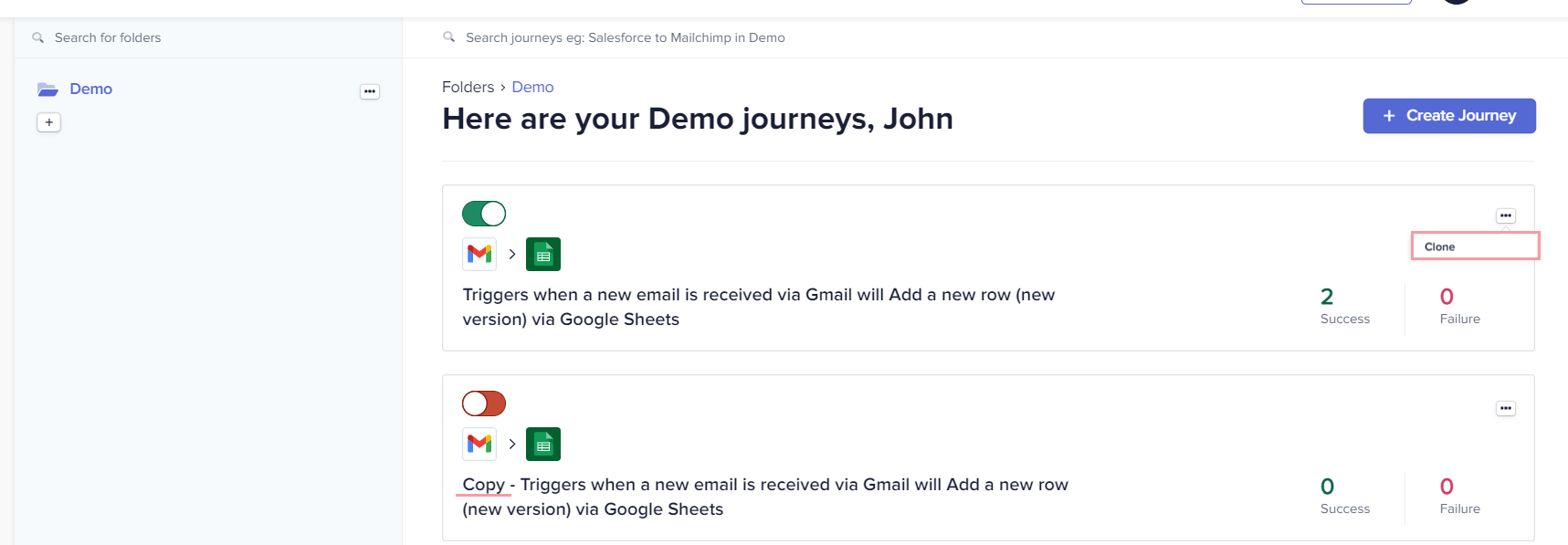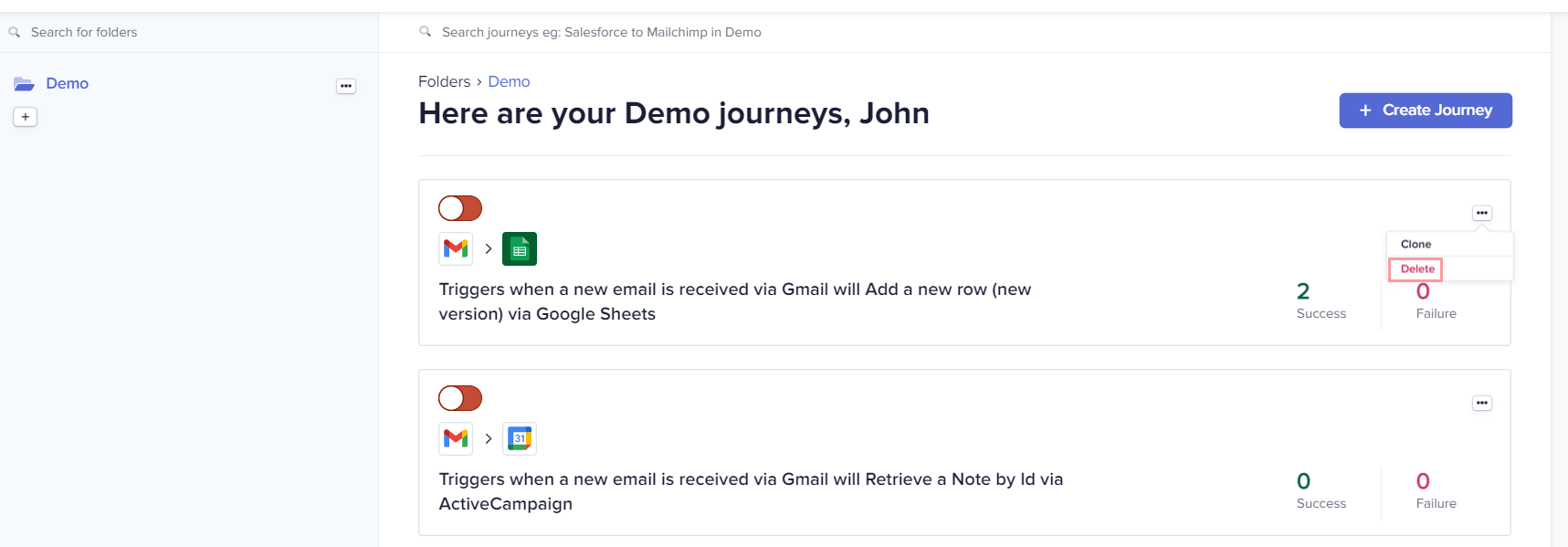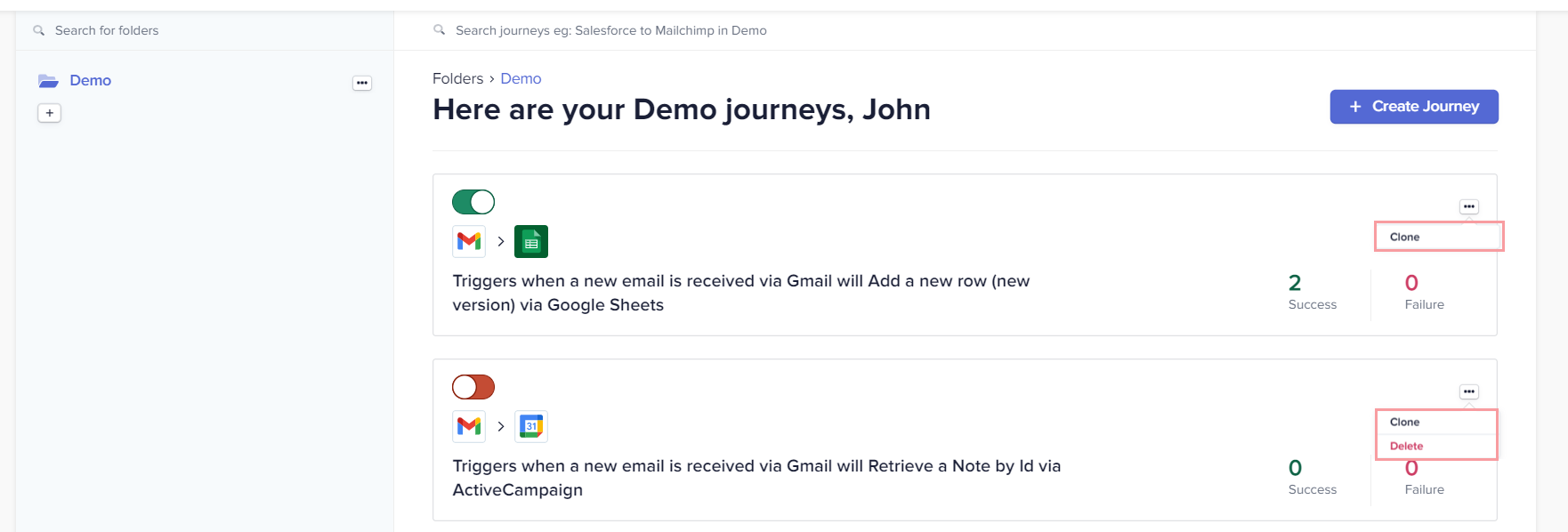Journeys
A journey consists of a set of steps that are connected logically to meet an objective. It's like configuring a use case in a series of steps. Once you finish configuring a journey and enable its execution, Gupshup Integrations will execute it for you each time when a specified event occurs.
To create a Journey, follow these instructions
Example
For a better understanding, let's look at some examples.
When a new event is created in my Eventbrite account, send the details of the event to my WhatsApp account using Gupshup WhatsApp messenger.
OR
When a new task is created in my Google Tasks account, translate the note in Spanish (using Google Translate), and send the translated text to my Gmail account.
Once you define this, Gupshup Integrations will take care of the rest.
For the first scenario, Gupshup Integrations keeps checking for a new event in your Eventbrite account. As soon as a new event hits, the journey automatically sends its details to the Whatsapp account you have specified.
If 10 new events are created in Eventbrite, Gupshup Integrations will run the journey 10 times, sending you the email for each event. All this happens in a flash requiring no manual intervention.
The example we discussed is a simple journey. You can create more complex journeys by connecting more actions as per your use case.
To get started with creating your first journey, click here. The guide contains a series of steps that help you to make your first step towards automation.
Cloning a journey
Cloning a journey gives you an exact copy of the parent journey including, a trigger, action(s), conditions, formulas, input data, and data pills passed from the Data Tree Output. The only thing to deal with a cloned journey is to re-establish the connections of a trigger and actions. You can connect through existing connections or create a new one.
Cloning of a journey is possible from the Journey list and Journey configuration manager.

Cloning a journey from the Journey list
Select the folder of which journey(s) you want to clone. Then, click the horizontal ellipsis at the right corner of the journey section and click the Clone button. A replica of the journey will be created with Copy as a prefix to the journey name:

Cloning a journey from the Journey configuration manager
Go to the journey you want to clone and click the Clone button. You'll be redirected to the cloned journey window, where you can start working with triggers and actions. Refer to the following image:
Deleting a Journey
Unlike cloning, deleting a journey is possible from the Folders and journey configuration manager. Deleting a journey will result in a permanent loss of the journey data from your account.
Deleting a journey from the Journey list
Navigate to the folder in which you want to delete a journey. Then, click the horizontal ellipsis at the right corner of the journey section and click the Delete button. A confirmation tab will pop up to delete the journey permanently:

Click the Delete button. A confirmation screen will appear. Once confirmed, the journey will get deleted permanently.
However, a journey in an active state cannot be deleted. Its execution needs to be stopped in order to delete it from the folder. Gupshup won't display the Delete button for the journeys in the active state. Refer to the following image:

Deleting a journey from the Journey configuration manager
Go to the journey you want to delete and click the Delete button beside Save & Start button. A confirmation window will pop up asking you to delete the journey. When you click the Delete button, the journey will be permanently deleted, and you'll be taken back to the Folders window:

Sharing and moving a journey
Share your workflows with other users so that they can simply set up the connections and start using them immediately. Move your integrations across folders through a simple drag-and-drop gesture.
Sharing creates a replica of a journey that is usable to a user without the need to create it from scratch. Sharing serves two advantages:
- Quick delivery of the journey to a customer.
- Saves time as it eliminates the redundant work of creating the same journey in different accounts.
Gupshup generates a web-like URL for each journey which can be sent via any messaging platform to a dedicated person or a group of users. Clicking the link redirects the user/group to the shared journey. They can then import it into their account and start using it. Let's see how to share a journey in detail.

Sharing a journey
Go to your Gupshup Integrations account and select the journey you want to share with a user:
Updated 2 months ago
